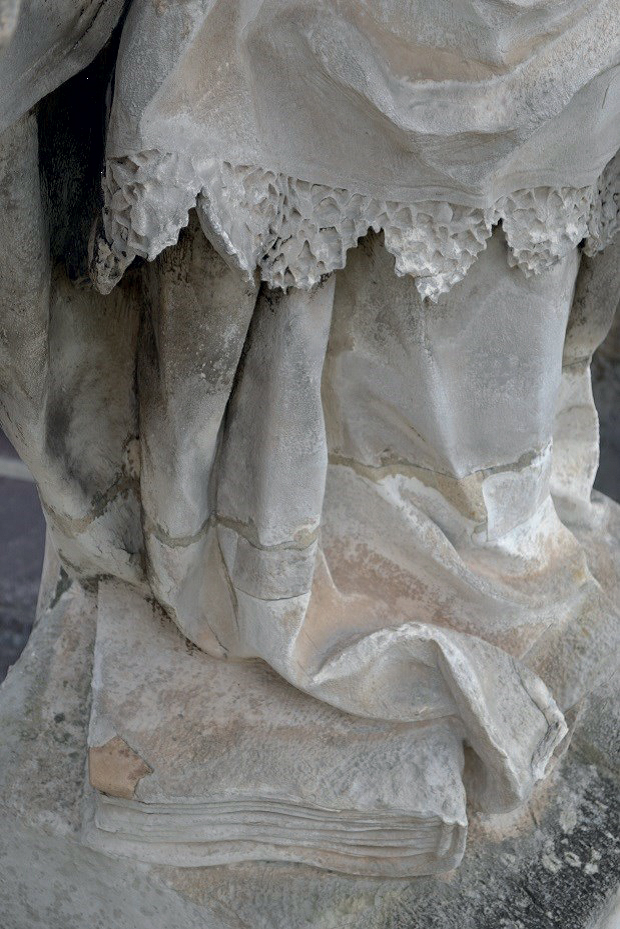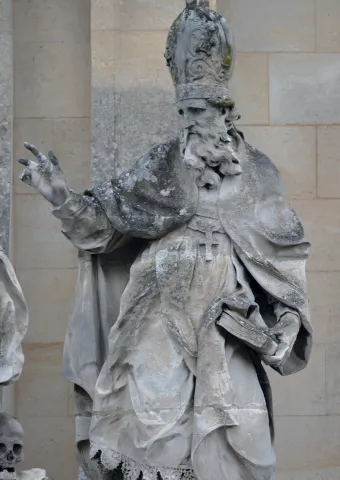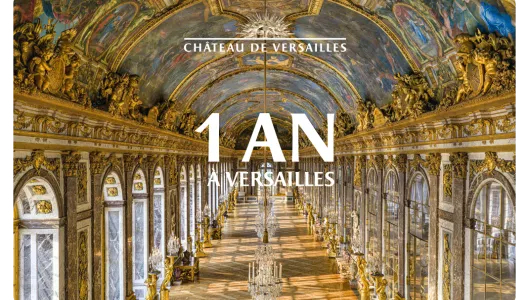Saint Augustine
A Father of the Latin Church, Saint Augustine is represented as an elderly man with a beard and dressed in bishop’s attire. He is wearing a mitre, a cope, a lace-edged rochet and a soutane and bears a cross on a chain around his neck. He is holding a closed book in his left hand while his right is extended in a gesture of benediction. A second book, placed near his right foot, symbolises his works. Born in North Africa in 354, Saint Augustine converted to Christianity when he was already over 30; he was baptised by Saint Ambrose. A priest in 391, he became bishop of his home town of Hippo in 395. He lived in a monastic community, but was nevertheless involved in the theological controversies of his time until his death in 430. A great thinker, he left a considerable body of writing, which led to him being adopted as the patron saint of theologians and printers.

Saint Augustine - detail
© EPV/Thomas Garnier
THE SCULPTOR GUILLAUME COUSTOU
The brother of Nicolas Coustou, and like him a student of Coysevox, Guillaume Coustou left for Rome after being awarded the Premier Prix de Sculpture (1697). He returned to Paris before 1703 and was received at the Academy. He was employed by the department of the King’s Buildings at the Invalides, Versailles and Marly (Marly horses which are today in the Louvre). His style is characterised by the strength of expression and, in this regard, Guillaume Coustou was also an excellent portraitist. Most of his work at Versailles concerned the Royal Chapel.







